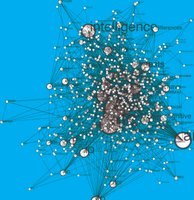Intelligence and Executive Function
 Patients with damage to their frontal lobes can show remarkable deficits in executive functioning - lacking planning, decision-making, and other behavioral skills - and yet some of these same patients can show normal intelligence on the Wechsler Adult Intelligence Scale (WAIS). Accordingly, recent work by Miyake et al. to fractionate the executive functions (EFs) into distinct subfunctions (updating, shifting, and inhibition) raises the intriguing possibility that some but not all of these subfunctions may be related to traditional intelligence measures.
Patients with damage to their frontal lobes can show remarkable deficits in executive functioning - lacking planning, decision-making, and other behavioral skills - and yet some of these same patients can show normal intelligence on the Wechsler Adult Intelligence Scale (WAIS). Accordingly, recent work by Miyake et al. to fractionate the executive functions (EFs) into distinct subfunctions (updating, shifting, and inhibition) raises the intriguing possibility that some but not all of these subfunctions may be related to traditional intelligence measures.To be fair, many frontal lobe patients will show selective deficits in measures of general fluid intelligence (Gf: reasoning, "thinking on your feet") and not in crystallized intelligence (Gc: stored knowledge). In this Psych. Science article, Friedman, Miyake, Corley, Young, DeFries and Hewitt directly assess the relationships of WAIS IQ, Gf and Gc to the recently identified executive subfunctions of inhibition, shifting, and updating. Given that intelligence and working memory capacity measures covary with genetic similarity between family members, the "default" hypothesis is that intelligence measures would correlate highly with all executive subfunctions.
To determine which executive subfunctions are related to which intelligence measures, Friedman et al., recruited 234 twins and readministered many of the EF tasks from Miyake et al. Confirmatory factor analysis replicated Miyake et al.'s findings that each of the executive subfunctions are moderately co-correlated but measurably distinct (with perfect correlations well outside the 95% confidence interval of each estimate). EF-Gf correlations proved to be mixed, with only updating showing a significant correlation. In contrast, EF-Gc correlations were all significant but non-equal, reflecting differing contributions from updating, shifting and inhibition to measures of crystallized intelligence.
Structural equation modeling confirmed that updating is of particular importance to the correlations between Gc, Gf, and WAIS IQ (which all shared 41 to 48% of their variance with updating). However, once this variance was included as a common underlying factor between the intelligence measures, the correlations with the other two EF subfunctions was no longer significant. This critical finding suggests that shifting and inhibition contribute to intelligence measures only insofar as they covary with updating abilities.
These findings are compatible with the long-established link between working memory capacity and intelligence measures, given that "updating" is essential to correct working memory function. However, the weak relationships between shifting, inhibition, and traditional intelligence measures is surprising, given that historical definitions of intelligence often include references to "controlling one's impulses" or "cognitive flexibility"). In summary, this work suggests that traditional intelligence measures may not be directly assessing these two distinct executive subfunctions, and that these may be the skills selectively impaired in the frontal lobe patients showing normal IQ despite abnormal executive abilities.


2 Comments:
I just wanted to say - as well as appreciating the fascinating words, I love the images you post. You consistently have the best graphics. Homer Simpson's donut was especially cute. Great blog!
Hi sandra - I'm glad you enjoy the images! I have a lot of fun picking them out.
Post a Comment
<< Home